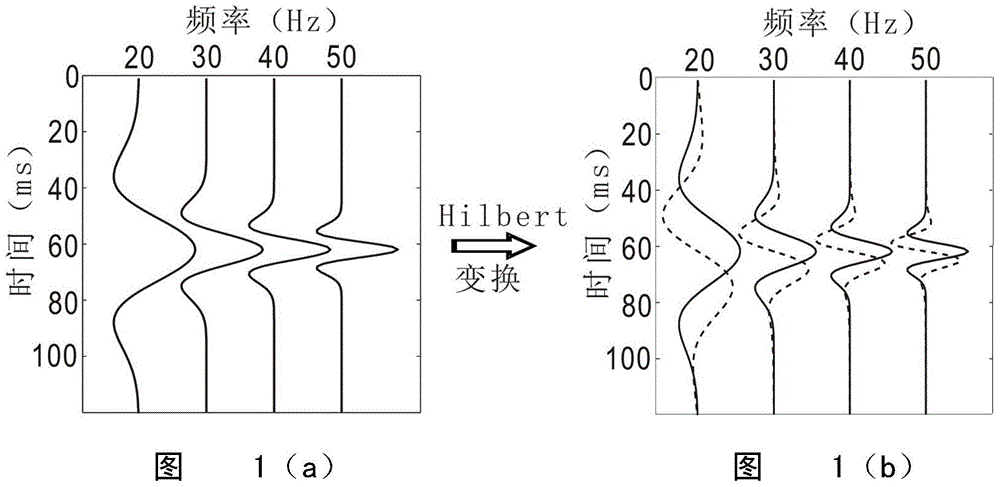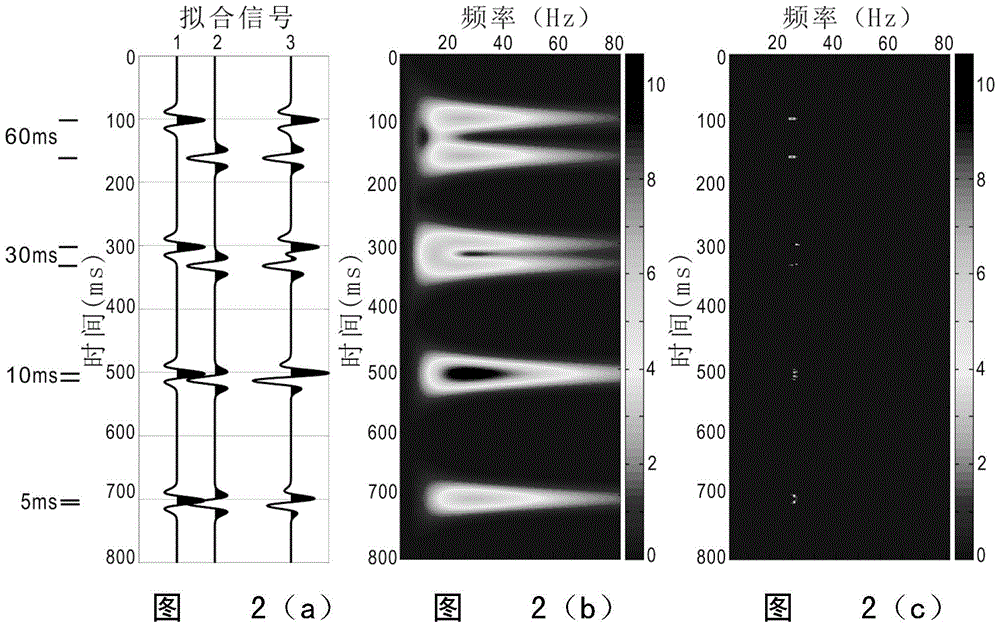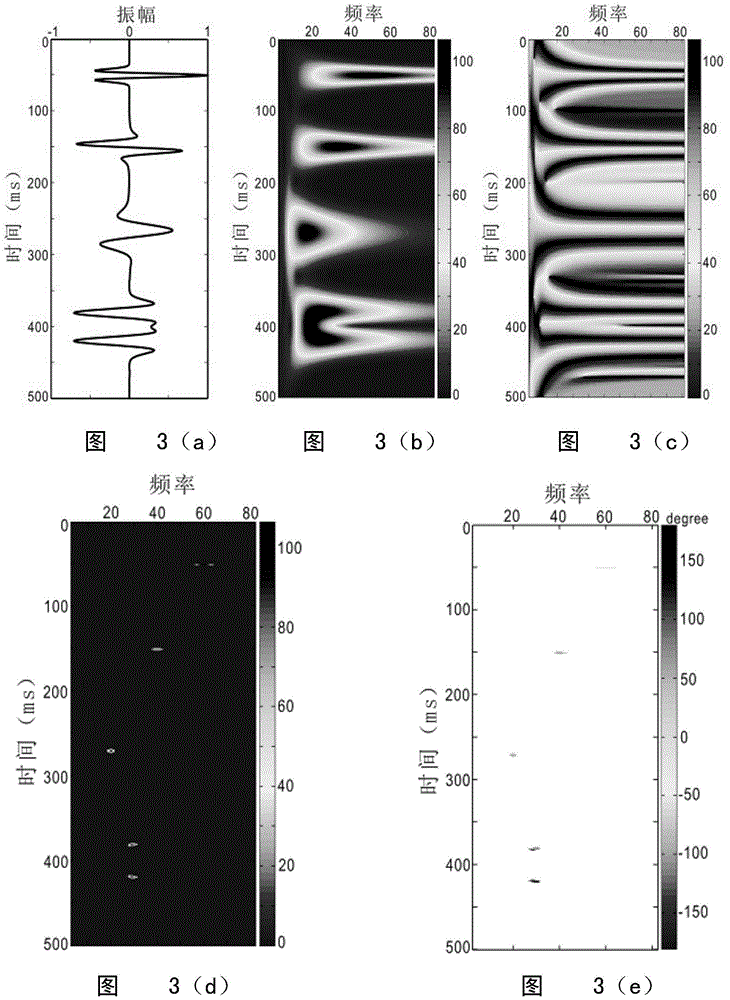A Method for Identifying Gas Reservoirs Using Wavelet Phase Features
A feature recognition and wavelet technology, applied in the field of identifying gas reservoirs using wavelet phase features, can solve problems such as difficulty in obtaining wavelet phase information, time resolution limitation methods, and limited phase applications, so as to improve the ability to describe, time high resolution effects
- Summary
- Abstract
- Description
- Claims
- Application Information
AI Technical Summary
Problems solved by technology
Method used
Image
Examples
Embodiment 1
[0046] Example 1: Fitting Data Example
[0047] Such as figure 2 As shown, this embodiment is an example of the ability of the method of the present invention to resolve thin layers. figure 2 (a) is a fitting signal composed of Ricker wavelet pairs with different time intervals, which is used to characterize the top and bottom reflections of formations with different thicknesses. figure 2 (b) is the time-frequency energy spectrum obtained by the CWT method. When the formation is thick (60ms interval), the CWT method can distinguish the top and bottom reflections of the formation; as the formation thickness becomes thinner ( figure 2 (c) is the time-frequency energy spectrum obtained by the complex spectral decomposition method. It can be seen that the time resolution of the invented complex spectral decomposition method is very high.
[0048] Such as image 3 Shown is an example of a fitted seismic signal composed of Ricker wavelets of different frequencies and phases. ...
Embodiment 2
[0050] Example 2: Actual Data Example
[0051] Such as Figure 5(a) ~ Figure 5(d) As shown, this embodiment is an example of actual data. Fig. 5(a) is the seismic section of the target area through the exploratory well, and the logging curve projected on the section is the water saturation curve. The positions of gas and water layers revealed by exploratory wells and geological interpretation are indicated in the figure. Figure 5(b) is the frequency anomaly profile used for hydrocarbon detection obtained by the CWT method, the time resolution is lower than the seismic resolution, and it cannot accurately describe thin layers; Figure 5(c) is the complex spectrum proposed in this paper The frequency anomaly profile obtained by the decomposition method has a high time resolution and is consistent with the formation position revealed by the logging. The gas-bearing reservoir has a response in the frequency anomaly profile, but the water layer also has a response in the frequenc...
PUM
 Login to View More
Login to View More Abstract
Description
Claims
Application Information
 Login to View More
Login to View More - R&D
- Intellectual Property
- Life Sciences
- Materials
- Tech Scout
- Unparalleled Data Quality
- Higher Quality Content
- 60% Fewer Hallucinations
Browse by: Latest US Patents, China's latest patents, Technical Efficacy Thesaurus, Application Domain, Technology Topic, Popular Technical Reports.
© 2025 PatSnap. All rights reserved.Legal|Privacy policy|Modern Slavery Act Transparency Statement|Sitemap|About US| Contact US: help@patsnap.com



